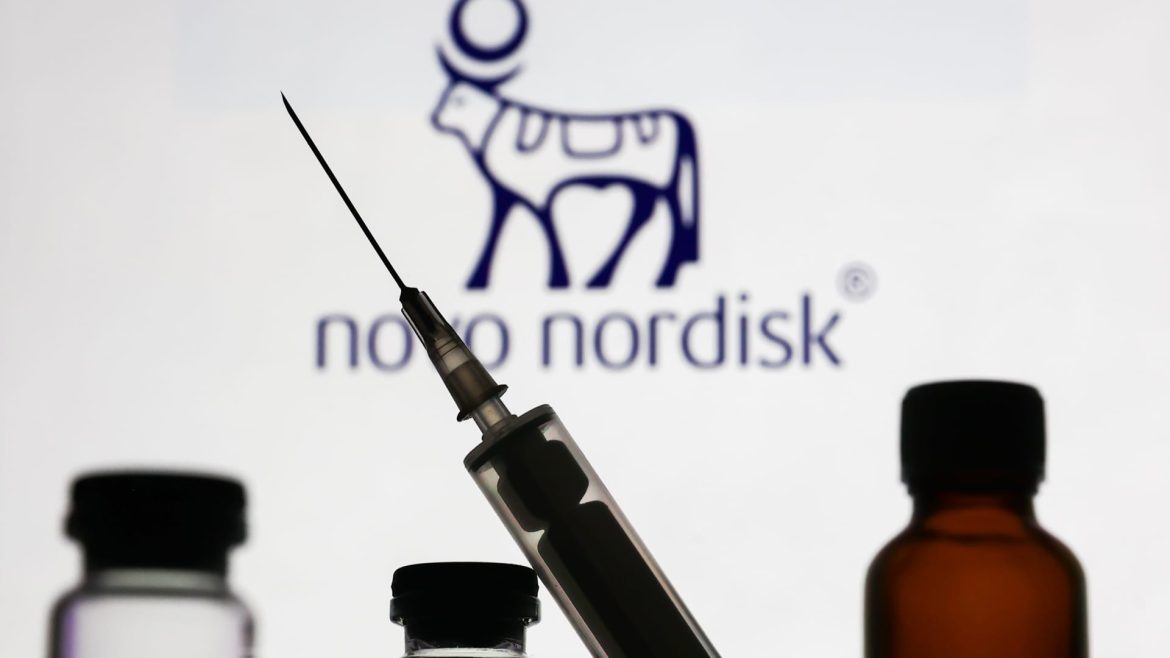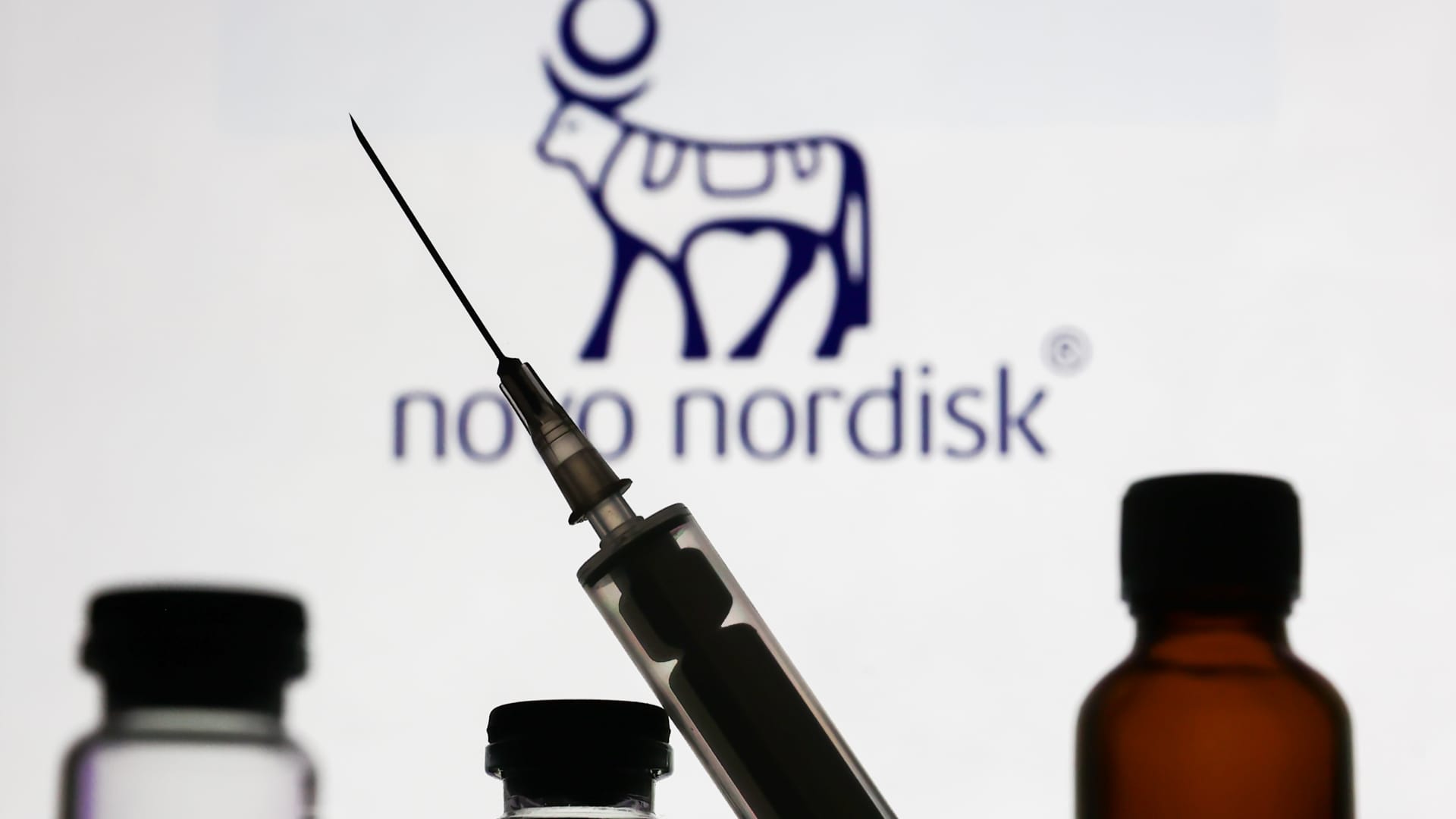The Wegovy Wobble: A Deep Dive into Novo Nordisk’s Stock Plunge
Introduction: The Rise and Fall of a Pharmaceutical Giant
Novo Nordisk, a Danish pharmaceutical powerhouse, has long been synonymous with innovation in diabetes care. However, its recent ascent to Europe’s most valuable company was largely propelled by the meteoric success of Wegovy, its blockbuster weight-loss drug. Yet, the company’s stock has recently taken a nosedive, leaving investors and industry watchers scrambling for answers. This report explores the multifaceted reasons behind this dramatic downturn, examining the interplay of market dynamics, competitive pressures, and internal challenges that have collectively contributed to this unexpected setback.
The Guidance Cut: A Shock to the System
The immediate trigger for Novo Nordisk’s stock plunge was its unexpected announcement of lowered full-year sales and profit guidance. The company pointed to weaker-than-expected growth in the U.S. market for Wegovy as the primary culprit. This revision was particularly jarring given the company’s history of consistently upward revisions since Wegovy’s launch in 2021. The sudden shift in outlook raised serious questions about the sustainability of Wegovy’s growth trajectory and Novo Nordisk’s ability to maintain its market dominance. The revised annual sales growth forecast, slashed from a range of 13% to 21% to a more modest 8% to 14%, sent shockwaves through the investment community.
The Copycat Conundrum: A Threat to Market Share
One of the most pressing challenges facing Wegovy is the rise of compounded versions of the drug. These unauthorized, often lower-cost alternatives are chipping away at Wegovy’s market share, particularly in the United States. While Novo Nordisk holds patents on Wegovy, the proliferation of these compounded products—despite potential quality and safety concerns—poses a significant competitive threat. This issue underscores the vulnerability of Novo Nordisk’s market position, especially in a healthcare landscape where cost considerations often drive patient choices. The company must take decisive action to combat this threat, including legal measures and regulatory interventions.
Ozempic’s Shadow: The Double-Edged Sword
Beyond the external competition, Novo Nordisk faces an internal challenge in the form of Ozempic, its diabetes drug that shares the same active ingredient as Wegovy. Ozempic’s off-label use for weight loss has become a significant issue, as patients and healthcare providers increasingly opt for the diabetes drug due to its accessibility and insurance coverage. This cannibalization of Wegovy sales creates a complex dynamic that impacts Novo Nordisk’s overall revenue and profitability. The company must develop strategies to differentiate Wegovy and Ozempic, ensuring that each drug is prescribed for its intended indication while maximizing their collective market potential.
Manufacturing Mayhem: Supply Chain Bottlenecks
Novo Nordisk’s struggle to meet the overwhelming demand for Wegovy has been a persistent challenge. Manufacturing complexities and supply chain bottlenecks have hindered the company’s ability to produce sufficient quantities of the drug, leading to shortages and frustrated patients. These supply constraints not only limit current sales but also damage the company’s reputation and create opportunities for competitors to gain market share. Addressing these manufacturing and supply chain issues is crucial for Novo Nordisk to capitalize on Wegovy’s potential and restore investor confidence. Expanding production capacity and streamlining supply chains should be top priorities for the company.
Insurance Hurdles: The Affordability Crisis
The high cost of Wegovy presents a significant barrier to access for many patients. While the drug has demonstrated impressive efficacy in clinical trials, its price tag makes it unaffordable for a large segment of the population, particularly those without comprehensive insurance coverage. Many insurance companies are reluctant to cover Wegovy, citing its high cost and questioning its long-term health benefits. This limited insurance coverage restricts the drug’s potential reach and contributes to slower-than-expected sales growth. Novo Nordisk must work with insurers to demonstrate the value of Wegovy and improve patient access to the medication. This could involve negotiating better reimbursement rates or providing data on the drug’s long-term cost-effectiveness.
Beyond the Hype: A Reality Check
Wegovy’s initial success was fueled by significant hype and media attention surrounding its weight-loss efficacy. However, the recent stock plunge suggests that investors are now taking a more sober view of the drug’s potential and the challenges facing Novo Nordisk. The market is undergoing a reality check, acknowledging that Wegovy’s path to market dominance is not guaranteed and that the company must overcome significant hurdles to maintain its growth trajectory. This shift in investor sentiment underscores the importance of managing expectations and delivering consistent results in the face of mounting competition and operational challenges.
The Eli Lilly Factor: A Formidable Foe
The competitive landscape in the weight-loss market is rapidly evolving, with Eli Lilly emerging as a formidable challenger to Novo Nordisk’s dominance. Eli Lilly’s Mounjaro, another GLP-1 receptor agonist like Wegovy, has demonstrated impressive weight-loss results in clinical trials. Data analysis has even suggested that Mounjaro leads to more weight loss than Wegovy. As Eli Lilly ramps up its marketing and production efforts, it poses a significant threat to Wegovy’s market share and could further erode Novo Nordisk’s profitability. The head-to-head competition between Wegovy and Mounjaro will likely intensify in the coming years, shaping the future of the weight-loss market. Novo Nordisk must be prepared to defend its turf and innovate to stay ahead.
The Path Forward: Rebuilding Confidence
Novo Nordisk stands at a critical juncture. To regain investor confidence and reignite its growth trajectory, the company must address the challenges outlined above. This requires a multi-pronged approach, including:
- Combating Copycats: Taking legal action and working with regulatory agencies to crack down on the sale of illegal and unsafe compounded versions of Wegovy.
- Boosting Manufacturing Capacity: Investing in expanding its manufacturing facilities and streamlining its supply chain to meet the growing demand for Wegovy.
- Improving Insurance Coverage: Collaborating with insurance companies to demonstrate the long-term value and cost-effectiveness of Wegovy, leading to broader coverage for patients.
- Managing Ozempic Cannibalization: Developing strategies to differentiate Wegovy and Ozempic, ensuring that each drug is appropriately prescribed for its intended indication.
- Innovating for the Future: Investing in research and development to create new and improved weight-loss treatments that can maintain its competitive edge.
Conclusion: A Fork in the Road
Novo Nordisk’s recent stock plunge serves as a stark reminder that even the most successful companies are not immune to market forces, competitive pressures, and internal challenges. While Wegovy remains a promising treatment for obesity, its path to market dominance is far from assured. The company’s ability to navigate these challenges, rebuild investor confidence, and maintain its competitive edge will determine its future success in the rapidly evolving weight-loss market. Novo Nordisk stands at a fork in the road, and the choices it makes in the coming months will define its legacy. The road ahead is fraught with challenges, but with strategic planning and decisive action, Novo Nordisk can emerge stronger and more resilient than ever.





